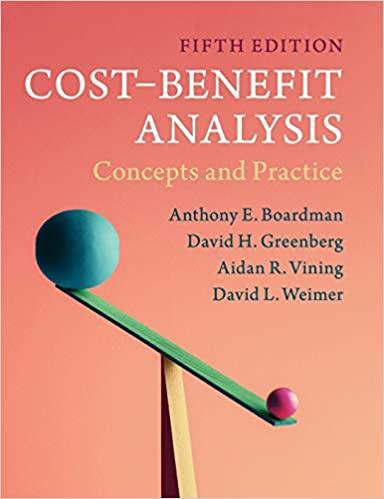Although we use compensating variation as a measure of the dollar value of utility here because we
Question:
Although we use compensating variation as a measure of the dollar value of utility here because we find it most intuitive (as discussed in the appendix to Chapter 3), equivalent variation, which measures welfare changes relative to the utility level after the price change, is generally considered a superior money metric for utility because it provides an unambiguous ordinal measure for ranking price changes. If U~ is the utility after the price change, then the equivalent variation is
![]()
where e(q1, p2, pn; U~) = B. Compensating and equivalent variation typically differ by a small amount due to income effects. In the case of quantity changes of public goods, however, the size of their difference also depends on the availability of close substitutes for the public good. See W. Michael Hanemann, “Willingness-to-Pay and Willingnessto- Accept: How Much Can They Differ?” American Economic Review, 81(3), 1991, 635–47.
Step by Step Answer:

Cost Benefit Analysis Concepts And Practice
ISBN: 9781108401296
5th Edition
Authors: Anthony E. Boardman, David H. Greenberg, Aidan R. Vining, David L. Weimer





